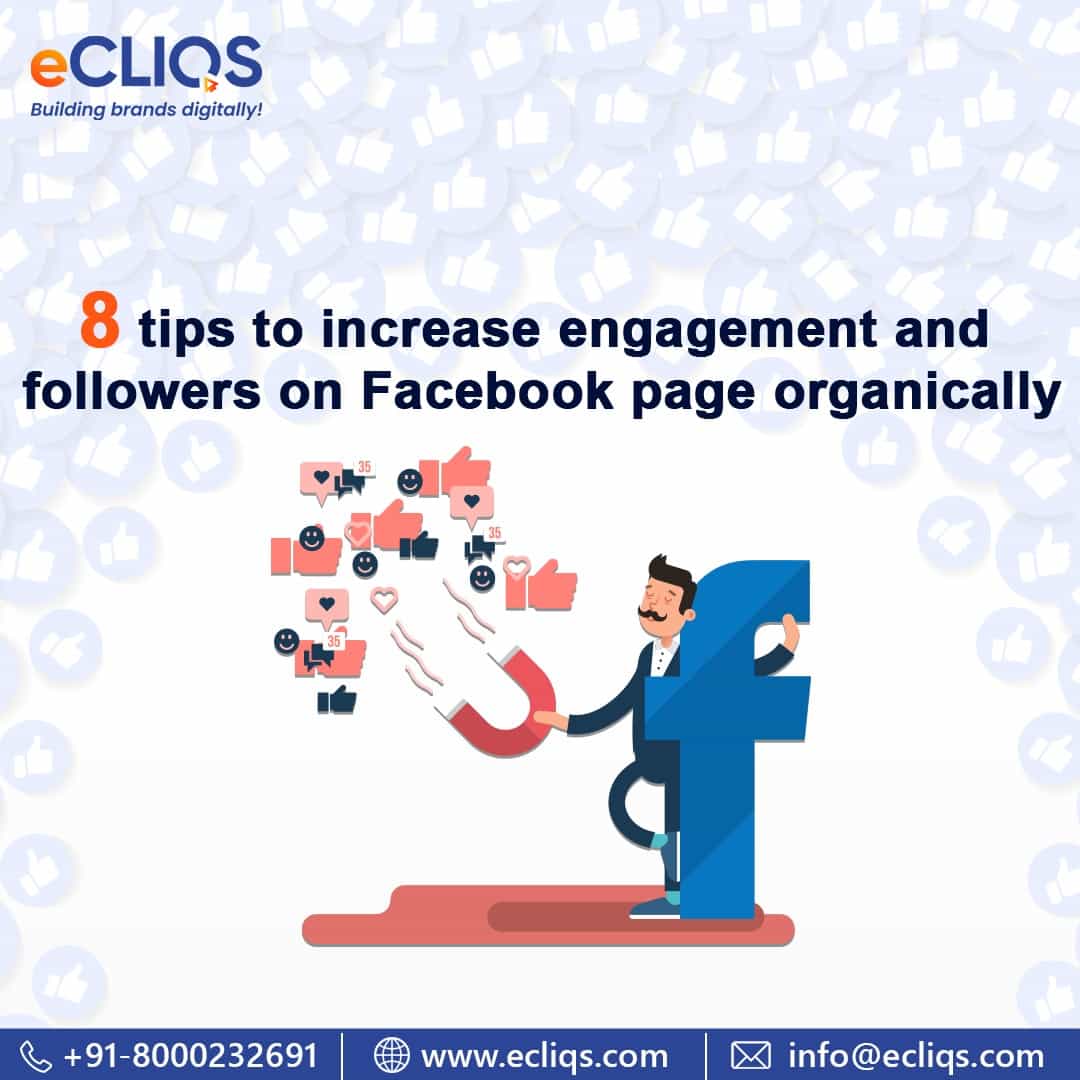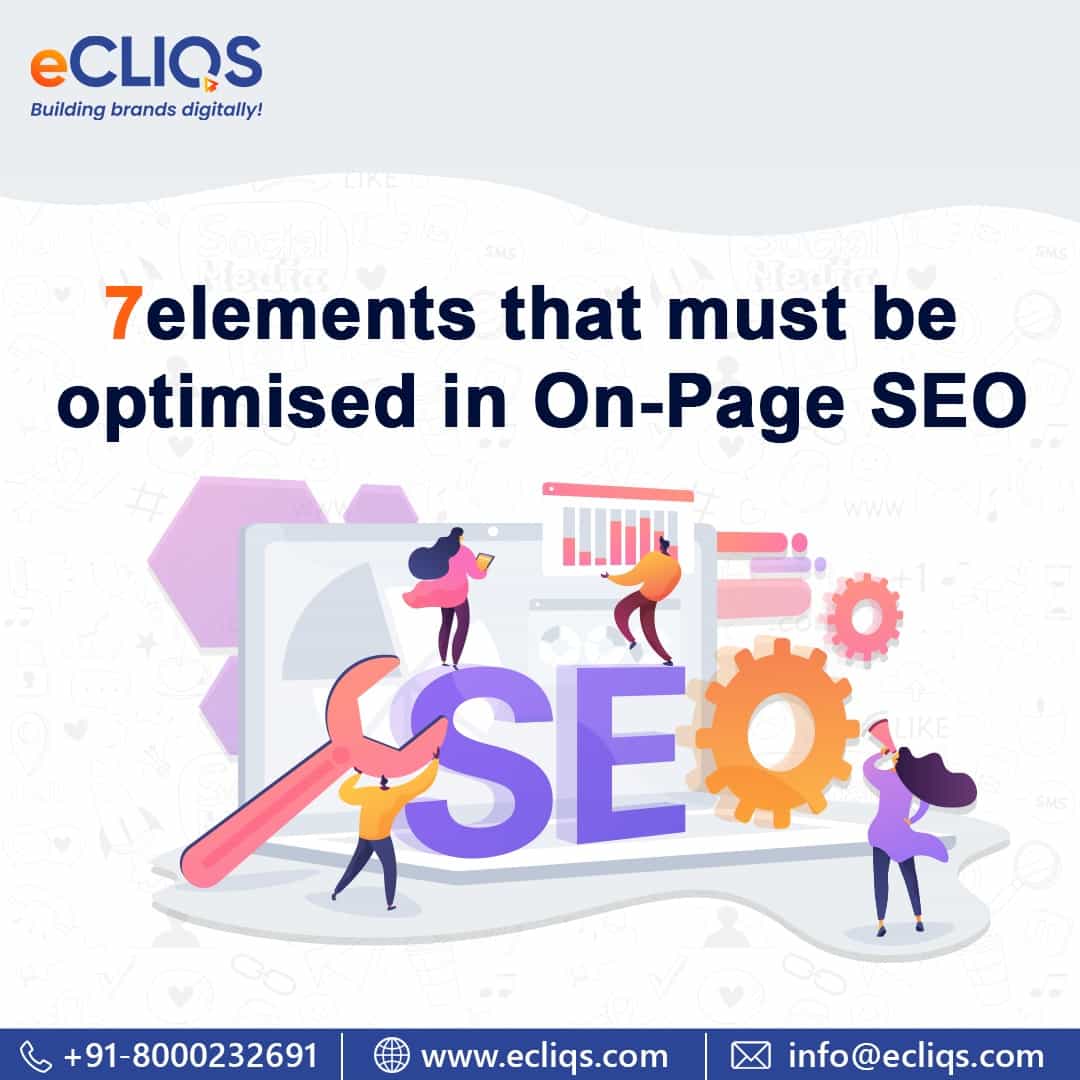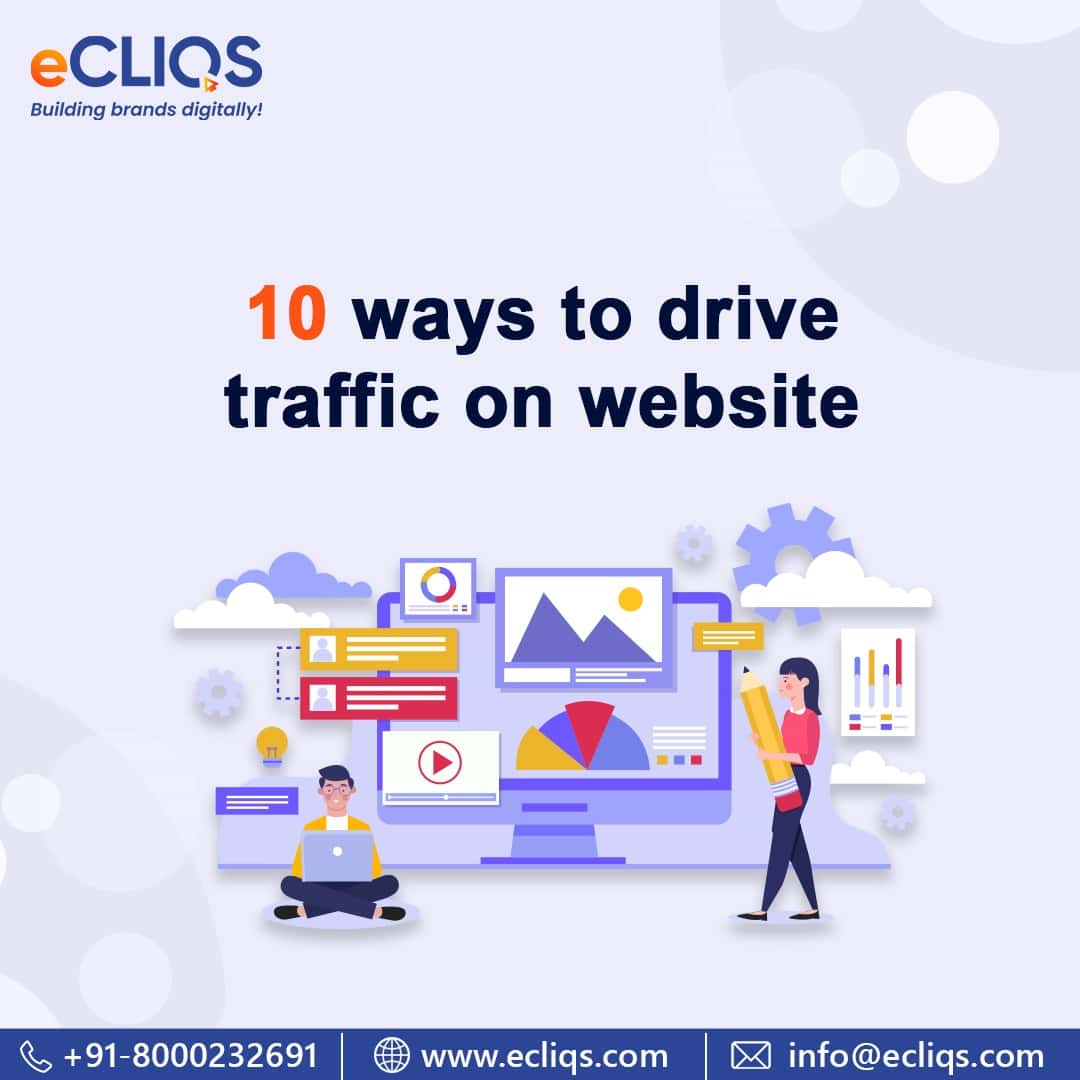8 Tips to Increase Engagement and Followers on Facebook Page Organically
Engagement on Facebook has dropped by 20% since the beginning of 2017, as reported by BuzzSumo. Despite being the most popular Social media platform, this downfall can surely give sleepless nights to any social media marketer.
To tackle this constant decline in engagement and followers, one needs to build strong strategies. To help you with that, here are 5 tips to increase engagement and followers on Facebook pages.

1. Mix up format of posts
Try out different post formats to check which of them is generating the maximum engagement. If images are not helping in boosting engagement, try videos. Similarly, try experimenting with posts.
This will help in growing Facebook engagement organically. It will keep your Facebook page up to date with fresh content. Track these posts to understand which format brings in the most engagement.
2. Create viral content
Creating viral content brings high traffic to your posts. Most popular Facebook pages focus on delivering viral content that not only increases engagement but also brings in new followers with every post. All of this is organic. Content can be a meme, video, animation, etc.
Your existing audience tags their friends on your viral content and shares it with their friends and followers. Sometimes, popular pages also share your viral content and you get exposure to a larger audience.
3. Use automation tools
Sometimes, it gets tough to post constantly on Facebook due to time constraints or busy schedules. And if you’re still a growing business, hiring a team might be a little expensive for you.
You can always opt for Social media automation tools. These tools help you schedule your post for upcoming days and events. They automatically get posted on your pre-decided time. If you have a social media team that manages all your activity, they can also use these automation tools as it makes it easier for them to post on different platforms at the same time.
4. Go live
Going live helps you interact with the audience directly. You can give insights into your upcoming products or services while going live. You can also get feedback for your products and discuss user experience. You can also demonstrate your existing services and products on Facebook Live.
Going live regularly helps in creating a strong engagement with your followers. And it also puts you high on the Facebook live map. The more the no. of people watching you live, the more chances are that you’ll be ranking high in Facebook live maps.
5. Partner with influencer
Influencer marketing has seen exponential growth in the last few years. Partnering with an influencer gives you access to a huge following that the influencer has. Audiences trust the influencer that they follow. So, when the influencer promotes your service and products, their audience gets convinced easily.
You can also run giveaways along with influencers which will further improve engagement. This not only increases traffic on your Facebook page, but it also increases traffic on websites as well.
6. Start a contest
This is one of the best ways to generate organic engagement and followers on your Facebook page. To keep the contest effective, keep your prize related to your brand. It’s best when you provide your product as a gift.
Encourage the users to like, share, and comment on the post. Ask users to post on timelines about the contest.
7. Tagging
Tagging helps in getting exposure to different audiences. When partnering with an influencer, ask the influencer to tag your page wherever possible. Comment on different posts related to your products and services.
When running a contest, ask the user to tag more people for higher chances of winning. This way you not only increase your engagement, but you get more people on board. Sometimes these tagged people become your audience.
8. Try user-generated content
UGC(user-generated content) is more than just a passing trend in Facebook. If users create content using your brand name, it shows that they trust you. It becomes a major signal to others. This
means more engagement and more organic reach. Some ways to do this is
- Get users to write reviews about your products.
- Start hashtags and ask your users to post content using your hashtags.
- Start a UGC contest and ask your audience to compete to win exciting prizes.
Final words
Facebook is a great platform for engagement. With a high user base and the right strategies, you can build exceptional engagement and popularise your Facebook page. Run paid ads and create high-quality content. Post viral content like memes so that the audience can relate to it and share it. Use automation tools to be on time when it comes to posting. Hop-in influencers and build a strong strategy to increase engagement and followers on Facebook.
References
- https://buffer.com/library/increase-facebook-page-engagement/amp/
- https://www.postplanner.com/boost-facebook-engagement-infographic/
- https://www.revlocal.com/resources/library/blog/how-to-get-more-facebook-followers-and-improve-engagement
- https://www.lyfemarketing.com/blog/how-to-increase-facebook-engagement/
- https://www.oberlo.in/blog/facebook-followers
7 Elements that must be Optimized in On-Page SEO
With over 1.5 billion existing websites and more than 2 million articles being posted every day, ranking high in SERPs has become more difficult than ever. Most of the good websites use SEO for better rankings and high traffic. These stats are enough to understand that with so much content available, it has become imperative for marketers to put-in extra effort to get their content noticed.
After crafting a piece of high-quality compelling content, you need to optimise it. Content optimization isn’t just using the right keywords, it’s more than that. On-Page SEO elements help in boosting visibility on search engines.
Why is On-Page SEO important?
On-page SEO helps in understanding the search engines better. It also helps in identifying whether the content is relevant to the search query or not.
Search engines are now better at understanding search queries. New and improved algorithms help search engines deliver results that meet users’ intent.
Adapting to these advancements is necessary. You can do that by making sure all your on-page elements are in place.
Here is a list of 7 elements that you should cover in on-page SEO.
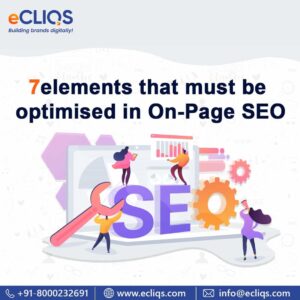
1. Title tag
The title tag is one of the crucial elements of on-page SEO. It exists in the head section of a webpage. Adding your target keywords to title tags gives a cue or context about the content. Try to keep the keywords as close as possible to the beginning of the title tag. Also it has to be done in the right way so that it makes sense
2. Keywords
Keywords are the first thing that comes to the minds of most people when they talk about SEO. Keywords are an important aspect of SEO. Using it correctly harnesses its power to the fullest. Use keywords in the right quantity neither too less nor too many as keyword stuffing is penalised by search engines
3. H1 tags
H1 tags or heading 1 tag indicates the primary heading of the web page. It is one of the major ranking factors in search engine optimization. It is usually the most visually notable part of content. H1 tags are generally the title of your blog. It should describe the content precisely. The length of the H1 tag should be between 20 to 70 characters; going beyond this will dilute its influence.
4. Page URL
Page URL is another element that gets noticed first. While deciding which URL should be used, keep in mind the main keywords of the content. Try including keywords in URLs and separate them by hyphens.
URLs should be concise. Keep your URLs neat, keyword-focused, and descriptive. It will help users in understanding your content.
5. Meta descriptions
Meta descriptions are considered an important element of On-Page SEO. Writing a clear, short, and compelling meta description that reflects your content sufficiently can help in improving click-through rates and drive more traffic.
The length of meta descriptions should also be checked. Google can show meta descriptions of up to 320 characters, but it’s best to keep them between 70 to 160 characters.
6. Image optimization
Images make a website look more appealing and when properly optimized, they make for valuable SEO assets. Image optimization gives your content an additional opportunity to rank high and enhances the user experience. Add relevant images to your content so that it helps the user understand your content better.
Use the title keyword in the image title, alt tag, and filename of the image.
7. Internal and external links building
For On-page SEO, internal and external links in content are important. These links signal Google that the website is resourceful and citation-worthy.
Adding internal links not only helps the user find relevant content within your website but also helps in keeping search engine bots on your site for a longer duration.
Linking three to four reputable sites boosts your trust signal which again helps search engines rank.
Conclusion
On-page SEO is one of the major aspects of better rankings in SERPs. On-page SEO enhances the website structurally including design, mobile-friendliness, images, links, page size, etc. On-page SEO improves page speed and user experience. Including all the above points will not only boost your ranks in SERPs, but will also improve the credibility and reliability of your website.
References
- https://www.brafton.com/blog/creation/why-content-is-important-for-seo-2018-edition/
- https://tekeye.uk/computing/how-many-websites-are-there
- https://moz.com/google-algorithm-change
- https://www.ilfusion.com/checklist-7-key-on-page-seo-elements-for-better-content-optimization
- https://terakeet.com/blog/on-page-seo/
- https://backlinko.com/on-page-seo
- https://www.searchenginejournal.com/on-page-seo/essential-factors/
10 Ways to Drive Traffic on a Website
Many businesses fail to come up with new and innovative techniques to increase web traffic. Every entrepreneur wants more and more traffic on their website. More traffic means more business. They invest their precious time and effort painstakingly setting up the website. Still struggling to drive traffic on their website.
So, what should they do to increase their web traffic?
In this post, we’ll discuss 10 ultimate ways which will help in skyrocketing the traffic on your website.
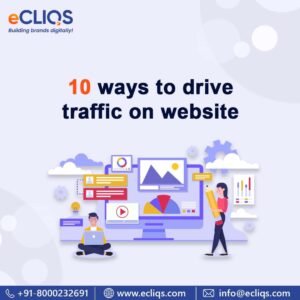
1. Running an Advertisement
The first and the obvious way is running an advertisement to promote your website. Ads are an excellent way to attract people to your website. They help in building brands and getting your website noticed. There are various kinds of Online ads available like Google ads, Facebook Ads, Instagram Ads, Linkedin Ads and more. Choose the platform where your target audience are and create an ad keeping the goal as website traffic and your website traffic will certainly increase
2. Promote website on social media
While producing great content is important, it’s not enough. In this age, you need to promote your content to reach the audience. Create social media accounts for your business and try to tell your audience what you’re doing. Follow the latest trends to be on top of social media. Social Media Marketing helps businesses in creating brand awareness which further helps in driving traffic to the website.
3. Optimise Content according to SEO
When it comes to websites, SEO is one of the most important tools for increasing traffic. Conduct proper keyword research and make your website SEO optimised. Write keyword-rich meta descriptions. Reach out to a professional digital marketing agency for SEO as it requires technical knowledge where an expert can really help.
4. Guest posts
People think that guest posts are a thing of the past. But that’s not true. You can write a guest post for others or you can make other popular bloggers write a guest post for you. Linking both will allow you to have a share of the audience from the guests’ audience. It helps in getting more referral links and more backlinks. It also increases brand awareness.
5. Conduct a Podcast
In the US, 42% of the population have listened to a podcast (source:podcastinsights).
In recent times, the podcast has become one of the hottest marketing channels. People prefer podcasts as they can listen to them while doing other works. Appearing as a guest on a podcast and telling the listeners about your website can help in getting new visitors.
6. Host competition and giveaways
Hosting a competition and giveaways regularly makes the people visit your website and return. When visitors see a prize, it helps in convincing them to interact with your website.
7. Engage in email marketing
Email marketing helps in drawing visitors regularly to your website. Build a list of emails and send a personalized e-mail that highlights your business and gives the recipient a reason to visit your website.
Email marketing helps in building trust and increasing brand awareness. It helps in building an authentic connection with the recipient. Include a call to action button that directly sends the recipient to your website.
8. Influencer marketing
Influencers have a large audience and when you get an influencer to market your website, it puts your website in front of their audience. You can provide coupons to the audience of the influencer which further will help in convincing them to visit the website.
9. Conduct webinars and events
Webinars and events are a simple yet effective way of informing people about your business. Conducting webinars and showcasing your business there increases brand awareness. Choose a relevant topic for the webinar and send invites. Get some infographics ready for promoting the upcoming webinars and events.
When a user is interested in attending the webinar, he or she is likely to visit your website to know more about you
10. Creating a quality infographic
Quality infographics have high engagement. Creating high-quality infographics and sharing them across different platforms creates brand awareness which helps in diverting more traffic to the website. While creating the infographics, one should focus on creating something which people would like to share. If your audience shares your infographics, you get a chance to attract a fresh audience.
Final words
There are a lot of ways to increase traffic on your website like social media promotions, SEO, email marketing, etc. Doing these will help increase web traffic to a large extent. The most effective way depends on your brand and your target audience.
For all these activities it would be better if you can bring a professional digital marketing company on board. Their expert team would carry out each of these tasks in the best possible way to get desirable results. e-Cliqs Consulting is one such digital marketing company who is result-oriented and customer centric in approach
References
- https://www.oberlo.in/blog/website-traffic
- https://www.forbes.com/sites/robertadams/2017/04/10/23-proven-ways-to-drive-traffic-to-your-website/?sh=2b0f54402654
- https://madisonmilesmedia.com/blog/10-proven-ways-to-increase-website-traffic/
- https://www.wordstream.com/blog/ws/2014/08/14/increase-traffic-to-my-website
- https://backlinko.com/increase-website-traffic
- https://blog.hubspot.com/marketing/increase-website-traffic
- https://ahrefs.com/blog/how-to-drive-traffic-to-your-website/
- https://www.podcastinsights.com/podcast-statistics/
- https://www.shopify.in/blog/how-to-increase-website-traffic
Email Marketing – The Ultimate Guide
Emails, despite being the oldest form of digital communication, still reign the top spot when it comes to usage. It is still used to build authentic connections with customers to keep the business alive.
With a user base of over 4 billion people (source: Statistica), emails dominate the other marketing channels. This user base is constantly increasing every year.

What is Email Marketing?
Email marketing is the process of targeting and communicating with leads and customers through emails. With an ROI of $38 on every dollar spent (source:emailmonday), email marketing deserves to be a part of every digital marketing campaign. It still beats social media marketing and affiliate marketing and according to smartinsights, email marketing is the most effective marketing channel.
So, Email marketing is an important part of digital marketing campaigns. But the problem is, most people don’t do it the right way which reduces the conversion rate.
To help you in building a successful email marketing campaign, here is a complete guide to email marketing covering everything you need to know about email marketing. Let’s get started.
Why email marketing?
Despite the rapid rise of social media, emails remain one of the most effective ways to generate leads and build loyalty with customers. People who purchased products that are marketed through emails spend 138% more(source:optinmonster).
Your social media account might get deleted for some reason but when it comes to emails, you own your list and no one can take it from you.
How email marketing helps businesses?
Emails increase brand recognition. Including your logo in your emails keeps your business in front of the audience constantly. A customized email with unique and elegant color palettes, logos, and brand graphic help to create a good image of your business in the minds of your potential customers and leads.
Email marketing helps businesses to connect to a larger target market and increase credibility. Consistent emails help in building trust with your customer and these customers who trust you, refer your products to their friends and family.
Sending email newsletters to your clients keeps them updated with what’s new in your business. It educates them about what you are working on and how your business is performing.
How does email marketing work?
A successful Email marketing campaign requires three elements. These are:
1. An email list
You need to have a list of active emails. This is a database of email contacts who expressed interest in your products and in receiving marketing communications from your business. You can generate an email list in many ways. One of the most popular ways is to offer a coupon in exchange for an email.
2. An Email Service Provider(ESP)
It is a software that helps you manage your email list and generate automated emails. It helps you send emails automatically, triggered by the audience’s behaviors which enables you to personalize each interaction with them and increase engagement.
3. Defined goals
The goals of the email marketing campaigns need to be defined and the entire email marketing campaign should be built around it. You can use an email marketing campaign to:
- Drive sales
- Generate leads
- Engage customers
- Increase brand awareness
Once you align these elements, you can start working on the email marketing campaign.
Important terminologies
Here is a comprehensive list of email marketing terminologies that will help you in understanding the ESP and bounce rate report.
- Acceptance rate
It is the proportion of emails that are accepted by the recipient’s ESP.
- Acceptable spam rate
Without impacting the sender’s reputation, the rate at which the email sending server is reported spam.
- Bounce rate
Rate of emails that were undelivered to intended recipients.
- Blacklist
The list of IPs that have been reported spam by SDS(Spam Detecting System).
- Bulk mailing
Sending emails containing similar content to multiple recipients at the same time.
- CAN-SPAM
It is the abbreviation of “Controlling the Assault of Non- Solicited Pornography and Marketing Act of 2003”. It regulates commercial emails by establishing requirements and standards for commercial messages. It gives recipients the right to opt-out of emails and also lays out the penalties for disregarding them.
- Clicks Per Delivered
Once delivered to recipients, emails that receive clicks define the click per delivered rate.
- Clicks per Open
It is the percentage of emails that become opened/viewed after getting a click.
- Cost per Thousand (CPT)
It is the cost that an email marketer bears from every 1000 email addresses on a rental list
- Conversion Rate
The number of recipients or subscribers who respond to your promotion or call is analyzed by conversion rate.
- Dedicated IP
Dedicated IP is the exact IP address which is used to send emails to subscribers or potential clients.
- Double Opt-In
This is the best way to build a subscribers list. It helps you to collect emails by asking interested parties to confirm their subscription by clicking on a link sent to their email. Doing so helps you only collect emails from people who are interested in the subject. It subsequently helps in lowering the probability of a high bounce rate.
- Email filter
It helps in blocking emails based on the subject line, sender, or content.
- Email Sponsorships
It involves purchasing advertising space in a newsletter or sponsoring a particular article or a series of articles to promote your service or product.
- False-positive
When a legitimate permission-based email is marked as spam or erroneously filtered.
- Hard Bounce
It refers to the permanent failure of an email to be delivered to the recipient.
- Honey Pot
An email address conspicuously planted by organizations that fight spammers.
- Retention List/Home List
When subscribers join the list willingly because they are interested in the subject of the matter, your product or service, they are added to the retention list.
- HTML Email
You can design custom and creative emails by using HTML Emails. You get the option of playing around with the design as much as you want. Optimized emails generally get a much better reception when compared to generic emails.
- IP Warm-up
Slowly increasing the number of emails sent from a single IP.
- Landing Page
A dedicated page to capturing leads from a linked email.
- Authentication Levels
Identifying whether a sender’s identity is legitimate
- List Segmentation
Segmenting subscribers that are most relevant to send your campaign emails.
- Open Rate
The number of emails opened by the recipients.
- Opt-In/Subscribe
When a user chooses to receive email communication from a website.
- Opt-Out/Unsubscribe
This allows subscribers to opt-out from receiving emails from a sender anytime they want.
- Physical Address
Address of the company or organization sending the email.
- Read or Open Length
Time spent by the recipient to close the email after opening it. Longer read length means the recipient finds the information provided in the mail interesting.
- Sender Score
It is a score out of 100 that defines the reputation of an IP.
- Single Opt-In
When subscribers opt to receive email communication from the sender, without confirming their email addresses.
- Spam Cop
It is a paid service that plants bait emails around the internet to identify people who harvest them and mark their addresses as spam.
- Spam Trap
Consists of an email address that was once usable but is no longer valid.
- Sender Policy Framework
A DNS record that identifies on whose behalf a domain or IP sends an email.
- Whitelist
Opposite of a blacklist, contains emails that have been approved to send messages to that recipient.
Final words
Running a successful email marketing campaign can deliver exceptional results while being affordable. Email marketing campaigns not only widen your network and reach, but also help in building a good relationship with your customer. Email marketing also helps in building brand awareness. Make sure your email marketing campaign has all the three elements and the above-mentioned terminologies will help you in executing the email marketing campaign in a better way.
References

